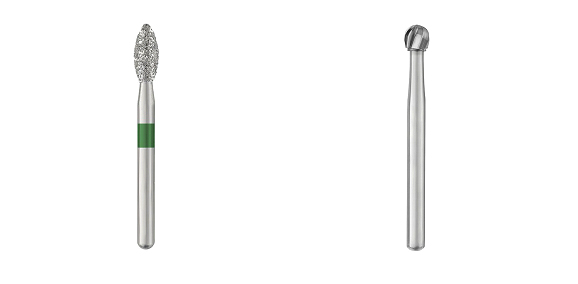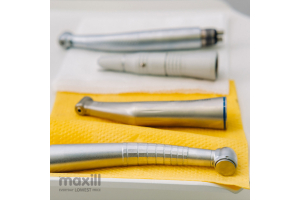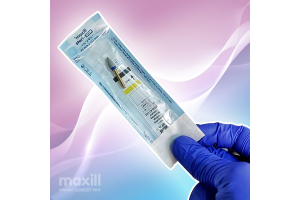Do You Know Your Burs ISO Number? - The 5 Classifications of Dental Burs
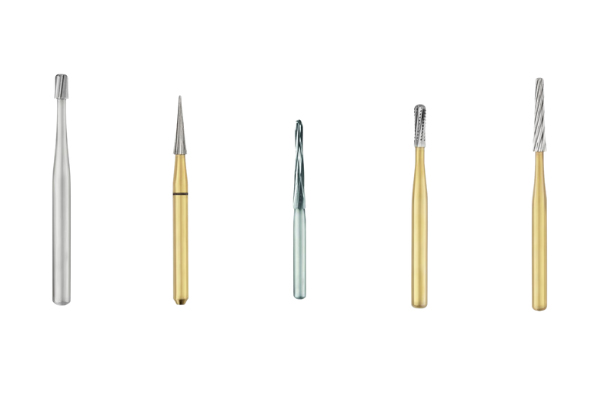
I remember my trips to the dentist as a child and looking at the dental bur blocks on the counter. I remember thinking there were so many and hoping they did not have to use the giant ones on me. At the time, of course, I did not realize that there were so many types of dental burs.
Each dental bur has a specific purpose, from cavity preparation to polishing, to use in a laboratory or surgical setting. Identifying the proper bur for the correct procedure can be a task. Sorting through the vast array of burs can be overwhelming.
Predominantly dental burs are made from top-of-the-line materials, including zirconium nitride coated, carbide, and diamond particles. Every year hundreds of varieties are being introduced. Understanding the ISO dental burs classification system will help you choose the best tool for the job.
What is a Dental Bur ISO?
In 1891 the SS White Company introduced the original numbering system for their dental burs.
This numbering system implemented by all dental bur manufacturers remained unchanged until 1955.
The American Dental Association (ADA) adopted the classification, but the classification is limited to stainless steel and tungsten carbide and does not include diamond instruments.
In 1979 The International Organization for Standardization (ISO), a worldwide federation of national standards bodies, presented a new globally accepted numbering system for dental burs.
This classification creates consistency and clarity among manufacturers.
A dental bur includes three different parts:
- the shank
- the head
- the neck
The shank inserts into the handpiece, the head cuts or polishes the tooth, bone, or restorative material, and the neck connects the shank to the head.
The ISO classification gives specific identifiers to the parts of the dental bur.
In this system, the burs are coded with a 15-digit number.
Each 15-digit number is broken down into five (3 digits) segments aligning with the following classification features.
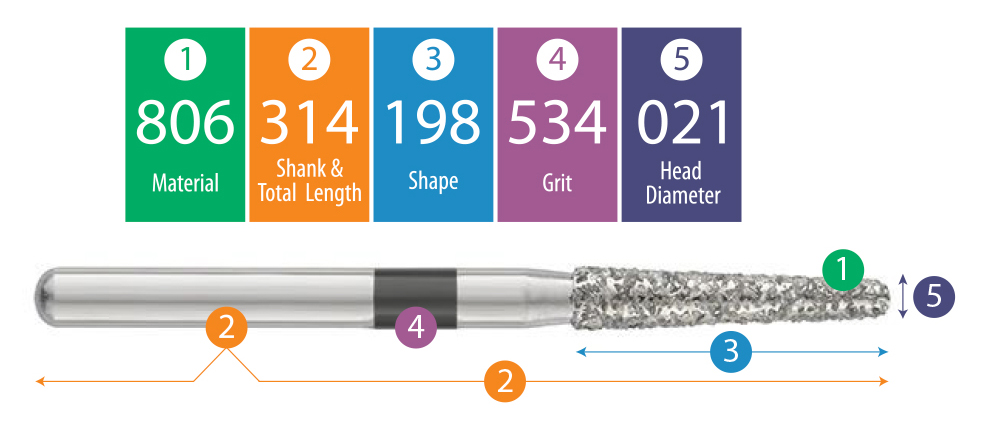
The 5 Classifications of Dental Burs
- Type of Material of the Dental Bur
- Type, Diameter, and Length of the Dental Bur Shank
- The Shape of the Dental Bur Head
- Grit Size
- Maximum Head Diameter
1. Classification of Dental Burs According to the Type of Material
The first 3-digit set of numbers in the ISO classification refers to the type of material of the bur.
Dental burs were initially manufactured using steel, but new, state-of-the-art materials exhibit superior strength and cutting ability.
Diamond and tungsten carbide burs are the latest generations.
Tungsten Carbide Burs (ISO 500 numbering) has about three times the strength of steel and is durable when cutting on various materials, including titanium, gold, dental metals, and cutting bone.
The cuts in the head of these types of burs are designed so there is very little debris when being used. This makes them very effective at cutting. Carbide burs cut and chip away the tooth structure rather than grinding as diamond burs do, this leaves a much smoother finish than diamond burs.
Diamond Burs (ISO 806 numbering) have a steel shank with a natural or synthetic diamond particle-coated head. Diamond is the hardest mineral in the world and is exceptionally effective when cutting tooth enamel, zirconia, or porcelain.
2. Classification of Dental Burs According to Type and Diameter, and Length of the Shank
The second 3-digit set of numbers in the ISO classification refers to the shank's diameter and the speed and function of each bur.
Turbine dental burs, also known as friction-grip or high-speed, are the fastest dental burs with a diameter of 1.6 mm and length of 20 mm. They are also known as high rotation burs, high-speed burs, or FG burs (Friction Grip). Additionally, referred to by the acronyms FGM (Friction Grip Mini) or FGL (Friction Grip Long) according to their shank length.
Contra-angle dental burs, also known as right-angle (RA) or slow-speed, have a notch on the end that fits into the slow-speed contra-angle and has a diameter of 2.35 mm and length of 20 mm.
Handpiece (HP) burs have the most extended shank, are used with straight or laboratory-style dental handpieces, and have a diameter of 2.35 mm.
3. Classification of Dental Burs According to Shape of the Bur Head
There is a multitude of shapes; most are named simply by the form they represent. For example:
- Ball-shaped burs for cutting, grinding, and removing hard and soft tissues.
- Pear-shaped burs for cavity preparation
- Flame-shaped bur for contouring and shaping
- Inverted cone-shaped for making undercuts
- Conical burs for chamfering
- Wheel burs for making occlusal shapes, deep cuts, or mechanical retentions.
- Plus, many more
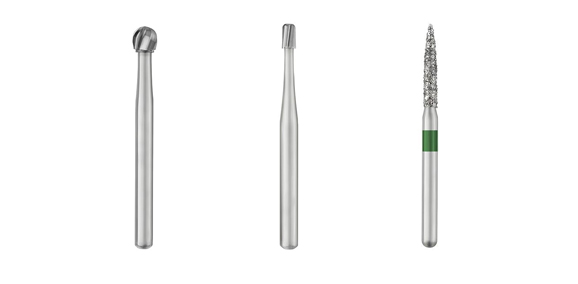
4. Classification of Dental Bur According to Grit Size
The 4th 3-digit segment in the classification refers to the grit size.
The grit can be tungsten, steel, or diamond particles.
Coarse grit will be the most popular for tooth reduction—fine and extra-fine grit burs used for polishing and finishing.
An ISO standardized color-coded band on each bur represents the grit size.
What Each Color Band Means on a Dental Bur
- White: superfine (ISO: 594)
- Yellow: extra-fine (ISO: 504)
- Red-fine (ISO: 514)
- Blue/No Ring: standard (ISO: 524)
- Green: coarse (ISO: 534)
- Black: super coarse (ISO: 544)
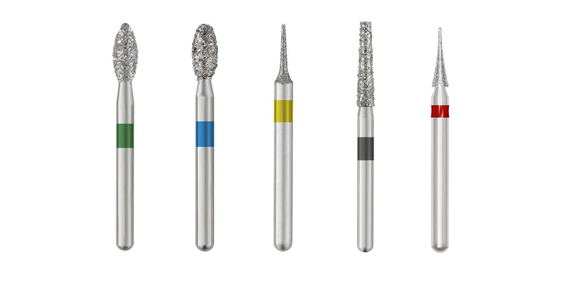
5. Classification of Dental Bur According to Maximum Head Diameter
The last 3-digit segment in the classification refers to the diameter of the head of the bur.
The sizes in this category can be numerous.
The diameter is measured at the widest portion of the bur and indicated in millimeters.
The smaller sizes are great for any type of work that requires a lot of detail, and the larger sizes are mostly used for dental surgery.
The world of dental burs is enormous, each with different materials, shapes, and sizes to suit different situations and procedures.
The ISO standardized classification system for dental burs introduced in 1979 enables the dentist to precisely identify and choose the right bur for the right job.
Labelling dental burs with a 15-digit code
Conclusion
Dental burs are diverse and indispensable tools in dentistry, designed for various procedures. To aid in the selection of the right bur for each task, the ISO dental burs classification system
was introduced in 1979. This system categorizes burs based on the material, shank dimensions, head shape, grit size, and maximum head diameter, streamlining the decision-making process for
dental professionals. By understanding and utilizing this standardized classification, dental practitioners can enhance the precision and efficiency of their work, ensuring optimal results in patient care.
Sources:
Hemamalathi SK, Abarajithan M, Kandaswamy D. A novel simplified numbering system for dental burs. Indian J Dent Res. 2008 Oct-Dec;19(4):284-7. doi: 10.4103/0970-9290.44528. PMID: 19075428.

